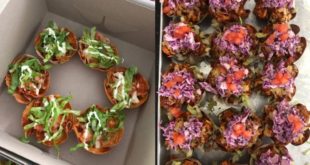On June 15, the multi-ministry taskforce announced that Phase 2 of circuit breaker reopening will commence on June 19.
Phase 2 will see the resumption of most activities, including the reopening of food and beverage (F&B) establishments that sell predominantly beverages as well as dine-in services.
According to a survey conducted by AI-powered restaurant solution provider TabSquare that polled 560 Singaporeans, 50 per cent of them will start dining out immediately after restrictions are lifted, with the number going up to 90 per cent after a few weeks of lifting of the restrictions.
Respondents stressed that these F&B businesses must comply with safe management measures — 90 per cent of them expect restaurants to have them in place — to ensure utmost hygiene control.
With a strong emphasis on safety measures, dining in will undoubtedly look very different from before.
Compulsory SafeEntry Checking-In At All F&B Outlets
F&B establishments with seated diners must implement digital check-in tool SafeEntry for all customers and visitors to facilitate contact tracing efforts.
SafeEntry is done via scanning of QR code or NRIC, or the manual entry of NRIC number and particulars through the mobile device.

So far, SafeEntry has been deployed in 16,000 locations nationwide during the circuit breaker.
Individuals who refuse to do so or provide particulars to assist with manual entry may be declined entry.
Compulsory Temperature Screening

F&B establishments with seated diners must conduct temperature
screening and checks on visible symptoms for customers at entrances.
They also have to advise those with fever and/or who appear unwell to visit a doctor before turning them away.
Digital Menus Or Mobile Payments
The government has highly recommended F&B outlets to implement mobile ordering, pre-ordering and electronic payment solutions to reduce physical interaction between customers and employees.
Restaurants may eliminate paper menus and provide guests with QR codes at the table that act as both a menu and as a payment method instead.
In the same TabSquare survey mentioned earlier, 70 per cent of diners expect restaurants to move to digital menus, 95 per cent expect restaurants to enable digital or online payments, and 53 per cent prefer contactless menu, ordering and payment options.

Restaurants in China have been using QR codes in this capacity for some time now and have cited great benefits. For instance, digital menus can be sorted by most popular dishes, allergens, price, and more.
When it comes to payment, it is no longer necessary to pass a credit card or cash to the server. Instead, a second QR code will allow the diner to pay via mobile phone.
Zero Live Entertainment
Liquor sales and consumption must cease at 10.30pm which means there will be no more late-night drinking with your buddies.
Live music, radio broadcasts and all forms of television/video screenings
and other forms of public entertainment such as dancing, darts or karaoke
are also not allowed.
Additionally, all common play areas for children, toddlers and infants in F&B establishments must be closed.
Queuing At Least 1m Apart From Other Customers
Clearly demarcated queue lines, and at least one-metre spacing between customers at areas such as entrances and cashier counters will be seen (e.g. through floor markers).

Queues may be managed using electronic reservation systems. Otherwise, staff can also take down diner’s details and call them when seats become available.
Additionally, the queues and waiting areas for dine-in customers, takeaway customers and delivery personnel may be separated.
Sitting At Least 1m Apart From Other Diners
In terms of table and seating arrangements, each table or group will be limited to five or fewer persons, with at least one-metre spacing between tables or groups.
Where tables and seats are fixed, they must be marked out to
accommodate groups of no more than five, while ensuring at least one metre spacing between groups.

Patrons should continue to sit only at unmarked seats and tables when dining at the hawker centres.
Additionally, self-service buffet lines must be suspended. This also applies to catering companies that provide meals on other premises. They cannot offer self-service buffet line, but may offer individually packed options instead.
Masks On At All Times Except When Eating And Drinking
Everyone — including employees, customers, delivery personnel and other onsite personnel — must ensure that they have their masks on properly at all times, except when eating and drinking.
F&B establishments must ensure that common spaces and items (e.g.
utensils placed in common spaces), as well as high-touch surfaces (e.g.
counters, menus) and interactive components (e.g. iPads, smart kiosks),
are frequently cleaned or disinfected.
All diners should also refrain from using any communal amenities (e.g. drinks dispensers and common condiments), as well as self-service food samples.
Plastic Shields May Become A Common Sight
Foodcourt chain Koufu is trialing table shields at their Thomson Plaza’s outlet in a month-long pilot test.
We are expecting them to push the table shields out to other Koufu outlets as well, and other foodcourt chains may also join them in implementing these protective barriers which are essentially 3mm thick, clear acrylic sheets.
The shields cut across the middle of rectangular tables, separating diners seated across from one another, while round tables have three separate partitions fixed to a central pole.

The acrylic partitions are affixed to aluminium holders a distance above the table surface, so that cleaners can wipe the tables without having to remove the shields each time.
When asked if foodcourt chain Food Republic would be implementing table shields or something similar, Loh Zhi Qin, marketing manager of the Food Atrium Division of BreadTalk Group which owns the Food Republic chain, said that they “will be monitoring the situation at Food Republic”.
Our other food atrium brand Food Junction will be partnering with Temasek Foundation to trial table-top separators at Junction 8 and Lot One Shoppers’ Mall. The table separators will be up by 25 June.
– Loh Zhi Qin, marketing manager, Food Atrium Division of BreadTalk Group
Temasek Foundation is trialing the table-top separators at selected Kopitiam and Food Junction food courts, as well as selected staff canteens for frontline transport workers.

Some countries around the world have already implemented similar protective shields for diners.

A canteen at a factory in Yantai city in eastern China’s Shandong province / Image Credit: AP


Sanitisers Placed At Strategic Areas
Automated hand sanitiser dispensers at all NEA hawker centres and markets will be a common sight as well.
The dispensers will be installed near the entrances or exits and lift lobbies of each food centre.
Some dispensers may be placed near tray return racks where possible, so that patrons can sanitise their hands after returning their trays if there is a queue at the washing basins.
Other cleaning measures would continue into Phase 2 — the cleaning frequency of toilets and frequently touched areas, such as table tops, seats, lifts and hand rails, as well as having cleaners wear gloves when clearing tables and used crockery and utensils.
In the toilets, there should also be adequate supply of toilet paper and soap.
Don’t Scramble To Head Out
While we are allowed to dine-in at hawker centres, food courts, eateries and restaurants from now on, that does not mean that we have to start planning for gatherings and meetups with people.
As seen in the recent news about hotpot chain Haidilao and Australian grill spot Burnt Ends being fully booked for weeks, Singaporeans are scrambling to plan reunions with their families and friends.
However, this should serve as a reminder that we are still battling an outbreak and Singapore is not free from Covid-19 yet.
If we can stay home as much as possible to contain the spread, we should do so.
Featured Image Credit: Temasek Foundation



